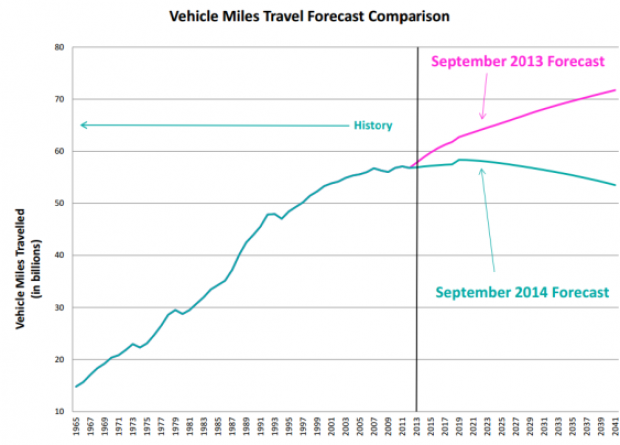A fossil fuel-free, decarbonized energy system to serve our electric power needs is now within clear view. The Northwest Power and Conservation Council’s Seventh Power Plan shows how the region can meet foreseeable growth in power needs with energy efficiency. It projects declining emissions under existing policies, and shows how the region could reduce power sector emissions 70% by 2035 with current technology on its way to fossil-free future.
That clean electricity future is now in Seattle, where our public electric utility has been providing carbon-free power service to the entire city since 2005, at some of the lowest electricity prices in urban America.
But freeing ourselves from oil as a transportation fuel is tougher. When communities rally to oppose new oil development, as Vancouver WA is doing now, citizens and leaders are always confronted by the nagging knowledge that our lifestyles and economies depend on oil, and alternatives at scale seem remote. Who are we to block new oil development when we remain such prodigious oil users? Is our opposition to new oil terminals hypocritical?
No, it’s not. Our oil dependence is the product of transportation, economic, and political systems that make oil the only practical and affordable alternative for many critical functions and services. Individual consumption choices within these systems are limited by past infrastructure investments and policy decisions.
#MoveBeyondOil
Share this story via Twitter:
We should, by all means, make more sustainable consumption decisions. But if we’re going to accomplish an energy transition that forestalls catastrophic climate disruption, we’re going to need better, more affordable transportation and energy choices. We’ll have to fight as citizens and communities to win those choices, before we can fully participate as consumers in a fossil fuel-free economy.[i]
But even as we seek accountability from the fossil fuel industry for perpetuating oil dependence and stoking the climate crisis, the ambivalence remains. In an interview about the dangers of exploding oil trains, a spokesman for the Western States Petroleum Association said, “Well, we all use oil.” That statement is clearly self-serving and evasive. And yet it’s also clearly true.
Getting over oil
If we are to free ourselves from the specter of exploding oil trains, leaking tankers and pipelines, and the climate havoc that oil dependence wreaks, we’ll have to do more than stop new oil development. We’ll have to quit the stuff.
This does not mean we need to “abandon all coal, oil, and gas tomorrow,” as we have heard some oil industry proponents and apologists suggest. That strawman is pure fearmongering. The climate movement has been mathematically and scientifically rigorous on this: Preserving a high probability of averting catastrophic climate disruption means leaving roughly 80 percent of proven fossil fuel reserves unburned.
Appropriate assumptions about the relative ease of displacing coal, oil, and gas would suggest we still have as much as a trillion barrels yet to burn – enough to allow a decades-long transition. While it will be harder to win our freedom from oil than it is to depose King Coal, growing signs suggest we can do it: Young adults and aging boomers are driving less; transit systems are expanding; economies are localizing; communication and information technology is enabling remote work; electricity is emerging as a transportation fuel of choice; attractive, livable communities are developing around alternatives to cars; mobility and prosperity are decoupling from oil throughput; . . . and the grip of oil interests on our economy, our politics, and our culture is beginning to slip.
In 2008, candidate Barack Obama urged us to “be the generation that finally frees America from the tyranny of oil.” This was criticized as high-flying rhetoric at the time. But we might yet do it. If the Paris Agreement and the intergenerational contract mean anything, we have to.
Silver buckshot
No one liberator will ride in on a white horse to free us from oil. But consider how this constellation of solutions opens a sightline from here to decarbonized transportation:
Oil consumption in the U.S. is levelling off. Even without a national commitment to climate solutions, including a strong climate policy, and despite significant economic growth, oil use is already beginning to decline. In 2003, the US Energy Information Administration projected that consumption would steadily grow at an average annual rate of 1.8% over the subsequent two decades. Consumption in 2025 was projected to be 47% higher than in 2003. But we seem to be on a different path: consumption in 2014 was about 25% below the 2003 projection.
Total US petroleum consumption 2000-2025
Fuel economy, after decades of stagnation, is now improving at a steady clip. More efficient vehicles account for almost half of the divergence from 2003 projections. The first increases in CAFE standards in nearly 30 years began with the 2012 models and will raise the fuel economy of passenger vehicles up to 54.5 mpg; vehicles will be cumulatively 90% more efficient in 2025 than in 2011.By 2030, federal fuel economy standards will save 2.4 million barrels of oil per day. Efficiency standards for medium and heavy-duty vehicles will reduce oil consumption another 530 million barrels by 2018.
Cleaner fuels, especially decarbonized electricity, are emerging to challenge the oil monopoly. Biofuels from non-food plants and waste products are no panacea, but they are beginning to make a meaningful and potentially sustainable contribution to fuel supply and oil displacement. The big prospective game-changer, though, is displacing oil with decarbonized electricity. With improving batteries and declining costs, widespread adoption of electric vehicles may be imminent. Using clean electricity to displace oil could dramatically reduce carbon emissions while boosting local economies by reducing the huge bill that most communities pay to relatively few oil-producing regions. On a per mile basis, the cost of electricity is a small fraction of the cost of oil: a typical electric car can go 100 miles on $2.00 worth of electric power.
With changing demographics and better transportation choices, we’re driving less. Oil-fueled transportation is a means to important ends: mobility for people and goods, economic vitality, etc. And while clean fuels such as electricity can displace oil to power vehicles, land use and transportation choices can minimize or reduce the need for those vehicles altogether.
More than half the discrepancy between 2003 projections and actual 2014 oil use comes from driving fewer miles. The U.S. PIRG Education Fund and Frontier Group declared in a 2013 study the end of “a six decade-long period of steady increases in per-capita driving in the United States,” particularly in urban areas.
A separate U.S. PIRG/Frontier national study documenting urban transportation trends, "Transportation in Transition: A Look at Changing Travel Patterns in America's Biggest Cities," finds:
- A decline in 99 out of 100 of the most populous urban areas since 2000 in the proportion of workers who commute by private vehicle.
- From 2006 to 2011, miles driven per resident fell in almost three-quarters of America's big cities while transit use increased in most of them.
- In about 85% of US cities, the proportion of households without cars increased; households with two cars or more cars decreased; and more people bicycled to work.
The study also found that less driving doesn’t seem to be a function of economic distress; on the contrary, it correlates with better economic conditions. The decreases in driving seem to be greatest in cities that were least affected by the 2008 recession.
Oregonians are setting the pace for driving less. (See “The Road Less Travelled is in Oregon.”) Oregon added 600,000 people between 1999 and 2013, in one of America’s fastest-growing state economies, but Oregon drivers logged almost a billion fewer miles in 2013 than in 1999. Comprehensive land use planning and ambitious urban transportation investments are key factors driving the trend and the greater Portland area is reaping very strong economic performance as a result. Compact communities and better alternatives to driving make Portland the kind of community that draws in talent, investment, and economic vitality.
Washington seems to be turning the corner on driving, too. In late 2014, the Washington State Office of Financial Management forecast a decrease in car traffic, an abrupt change from historic assumptions about ever-increasing vehicle use.
Even without a serious, science-based policy commitment to climate solutions, the arc is bending. But how much more is possible?
How long? Not long.
The trends above are underway, driven by economic changes, technology innovations, changing demographics, and policy choices. But an adequate climate response – one that prevents catastrophic climate disruption in line with the Paris Agreement – will require a much more rapid and concerted decarbonization of our energy system. Within the next several decades, we’ll need to essentially free ourselves from fossil fuels.
If it’s hard to imagine such a dramatic transition, it may be partly because we’re living in old news about what’s already happening and possible. Only in the past few years have we questioned ingrained assumptions about ever-rising oil consumption. Electric vehicles are just beginning to commercialize at scale. Work and land use patterns are only now starting to change as a result of information and communication technology. We are already much further along than the stale dialogue in policy-making circles might suggest.
The Union of Concerned Scientists has meticulously documented how West Coast States can cut their oil consumption in half by 2030 with currently available technologies and strategies. These reductions will require a concerted policy commitment to things we already know how to do. It may be easier to imagine the complete energy transition we need when we fully appreciate that in an important sense – if we just follow through on what we know – we’re already halfway there in 15 years.
“Whatever exists,” quips Amory Lovins, “is possible.” By leaning all the way in to our emerging knowledge of what’s already possible, we might just see our way to what’s necessary.
[i] In the meantime, it will be more efficacious to demand accountability (e.g., ExxonKnew), and prevent further fossil fuel expansion that locks us into dangerous emission trajectories (e.g., stopping Arctic Oil development) than to “meet the wrong enemy” by beating ourselves up for driving a gas-powered car to the grocery store.





